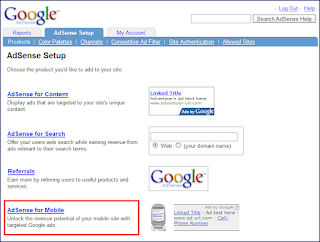While some of you may already be familiar with referrals for Google products, this launch will greatly expand the inventory and functionality of referrals for AdSense publishers. Below we've highlighted a few of the key benefits of referrals 2.0:
- Expanded product inventory: While many of you have had success referring one of our Google products, some of you weren't able to find a product that fit the context of your site. Referrals 2.0 offers products from thousands of AdWords advertisers, so you can find the right ads for your sites.
- Category and keyword targeting: With thousands of products available, it can be difficult to decide which ads will perform best on your site. That's why we give you the option to refer products by category and keyword. You can narrow down the types of ads you want to display and let AdSense figure out which ones will perform best on your site. Whether you want ads for a specific category, advertiser, or product, referrals 2.0 will give you the control to decide.
- Ad unit optimization: It can be tricky picking the best ads for your site, so we've included ad unit optimization for referrals. When you create a new referral ad unit, simply select the Pick best performing ads option. We'll then compare your selected ads to other relevant ads, and serve the ads we expect to perform best on your site.
- Better targeting for pages with multiple themes: With standard contextual targeting, ads may not match up directly with the text around them if there are a number of themes on the page. With referrals, you can select unique “keywords” for each ad unit to narrow the targeting directly to the theme you want. Better targeting means higher earnings for your site.
- Greater compensation for high-quality traffic: Since referrals are paid on a cost-per-action (CPA) basis, your traffic matters. If the traffic you send to advertisers is more likely to turn into a completed sale or lead, you will earn more with referrals.
- Add your seal of approval: Unlike AdSense for content ads, our program policies allow you to make specific references to referral ads on your site. If you endorse the product that you are referring, feel free to let your users know. By adding your personal review of the products you refer, you can help your users make more informed choices.

If you have any questions about how to add a new referral unit to your site, be sure to check out the updated referrals section of the Help Center.
UPDATE: Clarified that referrals 2.0 is currently only available in referrals-supported languages



















